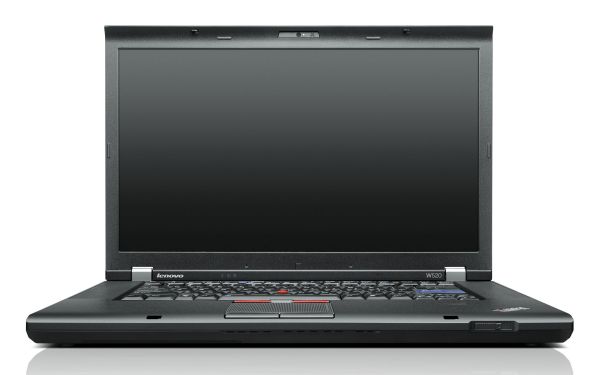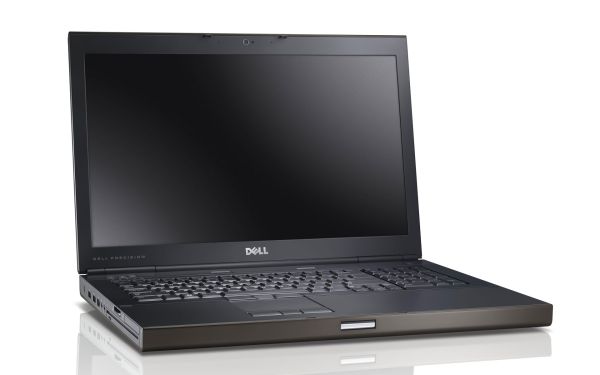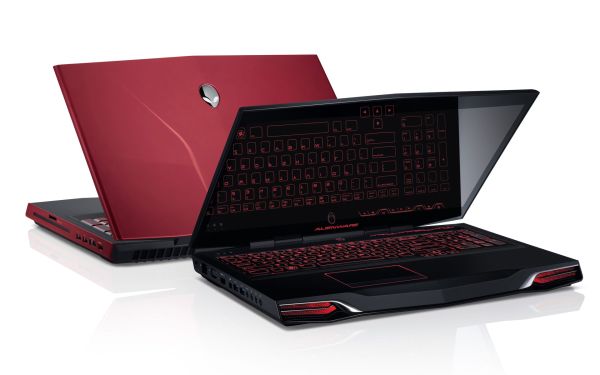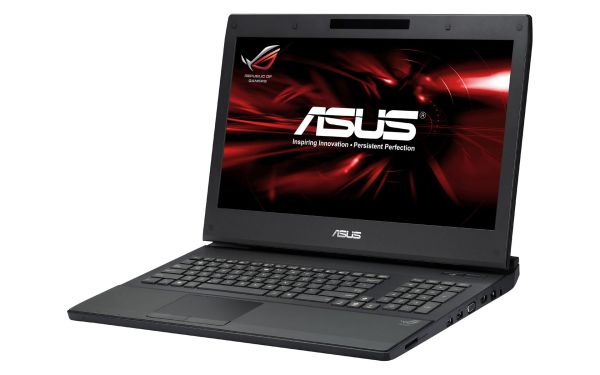Holiday 2011 Laptop Buyer’s Guide
by Jarred Walton on December 2, 2011 3:45 AM ESTGoing for Broke: High-End Laptops and Notebooks
Once we shift pricing to around $2000 and up, we again get a lot of options. There are three primary reasons to go with a high-end (read: expensive) laptop: there’s the no compromise Jack-of-Trades approach, mobile workstations, and no-holds-barred mobile gaming. We’ll take those in turn, though there’s certainly some overlap with the first two.
No Compromises High-End Laptop
A month or so back, one of our readers emailed me asking for advice on what laptop to get. He really wanted it all: battery life, build quality, an excellent display, and even the ability to play games. It’s fine to want it all, but you definitely have to be willing to pay for it. With the display being a major concern—he was very disappointed with most of the laptop displays out there—it narrowed things down a lot. I tossed out the XPS 15 and 15z as possibilities, though their GPUs are a bit underpowered for 1080p gaming. The Alienware M14x also came up, but he felt it was a bit too gaudy. With the Clevo W150HRQ sporting one of the best matte 1080p displays around, we also toyed with that but ultimately ruled it out because of the plastic construction. What was left was a laptop that also fits the next category: mobile workstation (albeit on the lower end of the workstation spectrum).
Built to last, equipped to do (nearly) everything: Lenovo ThinkPad W520 for under $1900
Lenovo’s ThinkPad line has always had a good reputation for build quality, though you’ll generally want to stick with the T-series and W-series to ensure you get the best of what ThinkPad has to offer. The W520 sports the same LCD panel as the Clevo W150HRQ (matte, 95% NTSC color gamut, and about as good as you can get with a TN panel), and it offers up plenty of other upgrades. The base model starts at $1000 and comes with a dual-core CPU, 4GB RAM, 320GB HDD, a Quadro NVS 4200M, and a 1366x768 display—that’s definitely not what we’re after. Grab a bunch of upgrades and you end up with something like this model for $1850.
Lenovo appears to be running some killer sales right now, though, which means you can get additional performance and features and still stay under $2000. We went with the Core i7-2760QM processor, 2x4GB RAM (with two open SO-DIMM slots if you want to upgrade to 16GB), a Quadro 2000M GPU, the 1080p high gamut display, and a built-in colorimeter and with the “TPHOLIDAY” coupon the total still came to under $1900. What’s more, you still get NVIDIA’s Optimus Technology and the large 9-cell battery means you can get upwards of eight hours. The Quadro 2000M is also interesting in that it has the same 192 CUDA cores as the GTX 560M, though at a lower clock and with a 128-bit memory interface; still, it’s enough to handle most games at medium to high detail and 1080p—and if you want to do “real” work, it can handle that as well. It would be great if we could get the W520 with a consumer GPU to save some additional cost, but unfortunately that's not something Lenovo supports; given their focus on business first, it's not too surprising.
Mobile Workstation, Take Two
Okay, the Lenovo ThinkPad W520 certainly qualifies as a mobile workstation, but what if you’re serious about the workstation aspect? Maybe you run some complex CAD/CAM or other scientific software that can benefit from even more GPU performance. In that case, you’re probably looking at Quadro 3000M or higher GPUs, and probably just go for broke with the Quadro 5010M. Sporting a full 384 CUDA cores and a 256-bit memory interface, the Quadro 5010M is the fastest mobile Quadro solution right now. Also, it doesn’t come cheap—not even remotely so. If you want the Quadro 5010M, there are three ways to get there: Dell’s Precision M6600, HP’s EliteBook 8760w, or a Clevo X7200. We’ll just skip the last one, because as potent as the system might be, it’s equally huge and build quality isn’t what we’d want from a $4000+ notebook. So between the Dell M6600 and HP 8760w, which one comes out on top?
For serious work (and serious money): Dell’s Precision M6600 for $4400
We’ve reviewed the HP 8670w, and we’ve tested an earlier version of the M6600 with the Precision M6500; both are clearly targeted at mobile workstation professionals and both have all the support you’d expect for such users. If you’re in the market for such a notebook, there’s a good chance your company is going to decide which one is “best” (because they already have a contract with Dell or HP), but if you have a choice—or if you’re paying out of your own pocket—the Dell Precision M6600 gets the nod for offering basically the same features and performance at a lower price. At the time of writing, you can get the M6600 with an i7-2720QM, 2x4GB RAM, 750GB HDD (or go with a 256GB SSD for $410 more), Quadro 5010M, and a 1080p IPS PremierColor panel for only $4400. Yowza. That includes a $827 instant rebate that Dell is currently running, though, without which the pricing would be a wash. (HP’s 8670w with similar specs currently checks in at $5193.)
Gaming on the Go
Best current gaming laptop: Alienware M17x R3 for $2690
For the mobile gamers who are really serious about gaming, you’ll want the fastest mobile GPU you can find. Sure, you could even go crazy with an SLI or CrossFire notebook, but we’d rather dial it back a bit and remain somewhat sensible. We gave the Alienware M17x R3 a bronze when we reviewed it back in June, and it remains one of the swankiest gaming notebooks around. The starting price of $1500 will get you a quad-core i7-2670QM, 8GB RAM, an HD 6870M, 500GB HDD, and a 900p display. That's actually pretty compelling, and you get switchable graphics (manual Alienware switching with AMD GPUs or NVIDIA Optimus with the green team), so you don't sacrifice battery life—the M17x R3 really does have it all!
Since we're looking at the high-end, though, we'll take the $1900 configuration and upgrade to the GTX 580M for $375 extra, and Alienware also has a $375 upgrade available that will give you a 256GB SSD for your OS and apps with a 750GB 7200RPM HDD for mass storage—just the way we like it. (If you’d rather stick with AMD GPUs, the HD 6990M is $75 less than the GTX 580M.) While we’re upgrading the graphics and other areas, go ahead and throw in the Killer Wireless-N 1103 for $40; it’s a healthy upgrade from Intel’s 2x1 MIMO Wireless-N 1000 and our experience with the 1102 shows that it actually can improve your wireless networking (and gaming) experience.
Good gaming for under two grand: ASUS G74SX for $1939
If spending $2500 or more seems a bit more for a gaming laptop, you can stick with the base setup of the M17x R3, or you might prefer ASUS’ G74SX as an alternative. Like the M17x R3, we gave it a bronze award for offering a nicely balanced gaming notebook, and we did like the fact that ASUS offers an SSD + HDD setup with the G74SX-DH72. The GTX 560M isn’t quite as snappy as the GTX 580M, but it’s enough to run most games (including Skyrim, Battlefield 3, and Batman: Arkham City) at high quality settings and 1080p. We’ll be updating our mobile gaming benchmark suite shortly and will include the G74SX results as a reference point.














88 Comments
View All Comments
JarredWalton - Saturday, December 3, 2011 - link
...You wanted to talk about the keyboard experience, so let's do that.You're correct: the key depth is very shallow, but how much that matters is largely up to personal taste. It's the placement of the keys as much as the shape that helps me with typing, and I can definitely type on the UX31E. It won't win any awards for the keyboard, but to utterly dismiss it just because the key travel is shallow (which seems to be part of what we'll see on ultrabooks in general)? Nope, I don't buy that argument at all.
I'd suggest getting keyboard backlighting in place would be higher on my list of priorities than key travel, and I'd really like ASUS to move the power key out of the current location (which is where the Delete key belongs--I had to sset Windows to ignore pressing the power button after the third time I inadvertently "typed" Power Off).
Anyway, the keyboard isn't a ThinkPad or a Dell Latitude, but it's also not an Acer. I'd rate the layout as decent (outside of the power key) but the feel of the keys as below average. And I would much rather be typing on my Microsoft Natural Keyboard. Still, if I were in the market for an ultrabook (I'm not), out of the three or four 13.3" models currently available I'd go for the ASUS, mostly because 1600x900 with a so-so keyboard beats 1366x768 with a slightly better keyboard. I just don't think anyone is going to give me an excellent keyboard in an ultrabook.
And yes, this whole comment was written on the UX31E and I'm not feeling any worse about the experience than I did before starting. Fact is, I've got the Acer S3 sitting right next to me as I type this and having just typing a few quick sentences on it I can say that key travel isn't much better there. I think ultrabooks are going to be about compromise, and one of those compromises is in the keyboard travel. When you set the maximum thickness of the laptop at 0.8", you won't get the quarter inch of travel found in a desktop keyboard.
JarredWalton - Saturday, December 3, 2011 - link
PS: Just for you I've added a note about the keyboard on the UX31E in the article, suggesting potential customers try one out in person if that's an area that matters to them.Penti - Friday, December 2, 2011 - link
You miss a whole category I bought a Arrandale (before SNB) CULV 11.6" (1366x768) laptop some while ago for basically as cheap as you get, for the same price as Atom netbooks which comes with decent battery, W7HP instead of W7 Starter and so on. With basically better battery life (got the slightly larger battery, cheapest model don't have them regardless if it's netbook or cheap ultraportable), cpu, software support and it feels like a real computer. Netbooks have no place when you get better hardware for the same price and power envelope. It's nothing to recommend.I'm not terribly sure what you got in that market now in the states, but I would prefer cheaper Intel chips here they are simply much higher end then Brazos or Atom. But you can get something like Toshiba L735-S3350 with Pentium B950, 4GB, 500GB 13.3-inch 1366x768 for 500 USD, Acer TimelineX AS3830T-6870 with Core i5 2430M 2.4GHz, 4GB, 500GB 13.3-inch 1366x768 for 600 USD. HP Pavilion dm1-4050us Core i3 2367M 1.4GHz, 4GB, 500GB 11.6-inch 1366x768 incl external dvd-drive for 570-600 USD. Or more in those lines, it doesn't have to be netbooks or 1000 - 1200 dollar ultrabooks. Certainly worth it for the extra 90 bucks to get a dm1-4050us over a dm1z Brazos netbook. Sure might be $140 with the MIR, but still worth it over the Brazos. I take a hundred dollar over a Atom or Brazos laptop any day. Still cheap or small enough and enough power to contend with 13-15" cheap models too. When we are talking non-properly speced out Atom netbooks for 200-300 they only has 3-cell batteries and virtually no battery life and other drawbacks such as Windows 7 Starter, low amount of memory and low res display, no webcams, bluetooth and so on. Like no hardware accelerated video (and thus Flash player video) on Atom's GMA3150 without Broadcom accelerator card, and I'm not sure you can even get that anymore from HP or others. That's not a problem with the Brazos. But I would still go Intel over Brazos here, they are simply not very powerful and kinda the wrong niche when compared to cheaper Intel Sandybridge stuff. There's more choices any way which was my point.
Penti - Friday, December 2, 2011 - link
I wouldn't call a Llano which has worthless graphics in all fairness no faster then integrated HD 3000 Graphics a choice when it comes to gaming and I would even be critical and pushing it to call GT540M a choice for low-end gaming.That IPS displays don't end up in 11-16" laptops is basically because they aren't manufactured or are manufactured in low volume or are expensive, or power hungry. HP's dreamcolor 15" IPS display is still specced at 15 Watts. In tablets they usually use AFFS+ displays for outdoor viewability which you simply don't get with IPS displays in that way. Even though some Tablet PC's do use IPS displays in the 12-13" range. However does displays probably end up costing quiet a lot.
For gaming I would probably say something like GTX550M or HD6750M is minimum. You can probably find some Llano with HD 6755G2/HD6750M for 500 refurbish and 700 ordinarily if you like budget. If you really like an AMD option. But again for 700 you have Intel options as well. 650-700 is probably where you find yourself under those 1000 dollar machines.
seapeople - Saturday, December 3, 2011 - link
Since the GT550m can play Starcraft 2 at 1080p in high just fine, I don't think the ~20% or so drop off to the GT540m disqualifies it for "low-end gaming".Penti - Saturday, December 3, 2011 - link
You would need GT550M for 1366x768 gaming basically for other games, but of course Llano without discrete GPU is disqualified. You wouldn't even get SC2 on 1366x768 medium on that. You need a discrete graphics card if you like to play SC2 at reasonable level. GT540M is just pushing on the limit to be disqualified, which is why I didn't outright say it's useless. For example a game like Metro 2033 would be too heavy for GT540M at 1366x768 and does not meet the _minimum_ requirements of many games at all. Anandtech here concluded for that matter that GT555M is not or just barely enough to drive 1600x900 in Alienware M14x in most games.Roland00Address - Monday, December 5, 2011 - link
For console ports Llano is fine for cheap laptops, since cheap laptops usually have 1366x768 resolution.PC focused games on the other hand is a different matter, high settings is another matter since what most people consider "medium settings" is what a xbox 360 is really running.
Malih - Friday, December 2, 2011 - link
tired of waiting for good ultrabooks with decent speed, good heat dissipation and good display,finally I put an end to all the wait and decided to get a MacBook Pro 13 (Late 2011),
I'm using it (mostly) on Windows, as I bought the Windows version of my work/development tools, it would be too costly, highly inefficient to buy the mac version too.
Vxheous - Friday, December 2, 2011 - link
I bought a G74SX-xc1 for $1350 Cdn, which other than 8 GB of RAM instead of 12GB, or having an SSD, was comparable in spec to some of the pricier G74 models. the XC1 is probably your best bang for buck in the midrangefrozentundra123456 - Friday, December 2, 2011 - link
Great article.One note however. I went to the Sears site, and several reviewers stated that that particular laptop has a somewhat gimped GT 560 M with a slower memory bus. I think the same thing happened a while back at Best Buy. They had a really good price on an asus gaming laptop, but the video card had a slower memory bus than the normal cards.
It wouldnt be a deal breaker for me, and that price is outstanding. But it is just something to be aware of regarding that notebook. Like I said, I would also be wary buying at Best Buy because they tend to do the same thing.